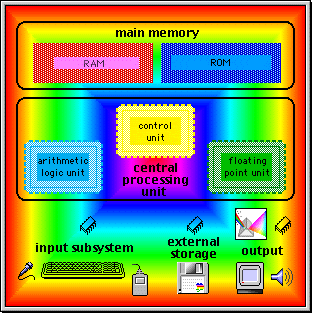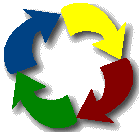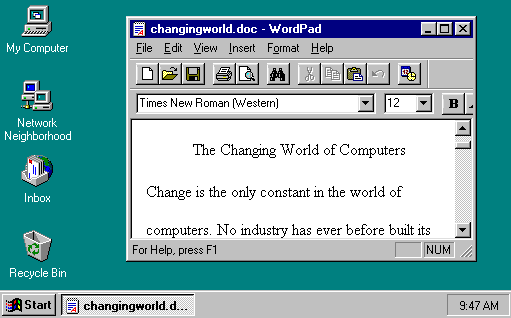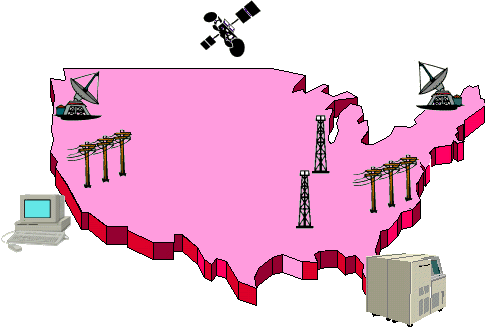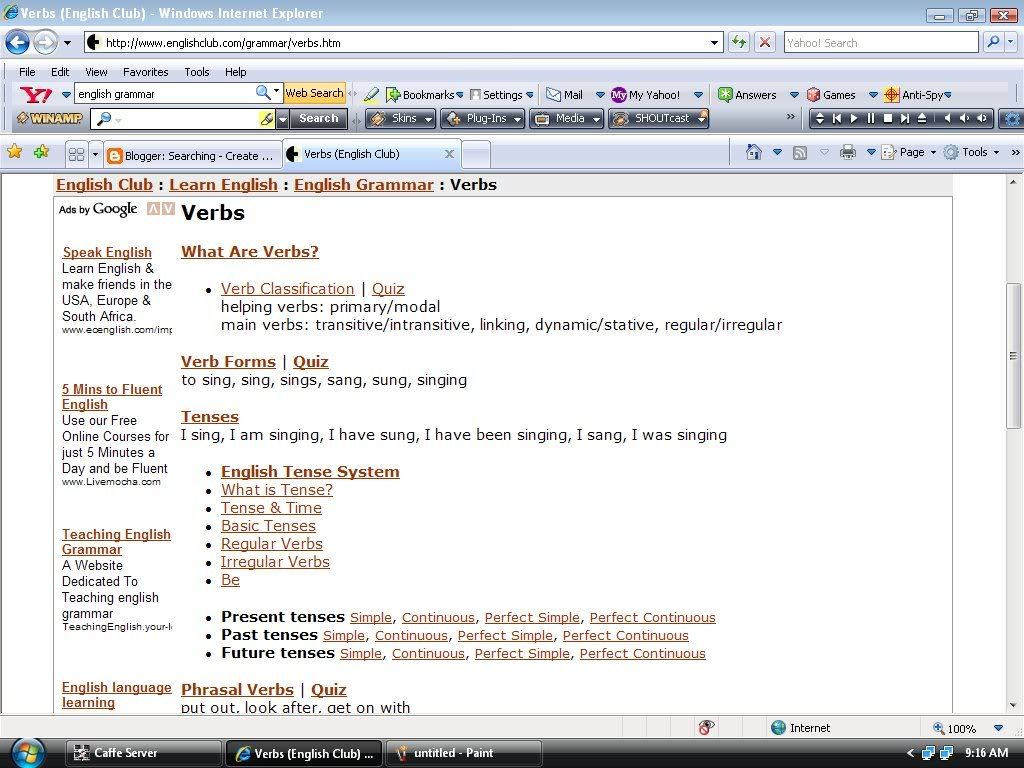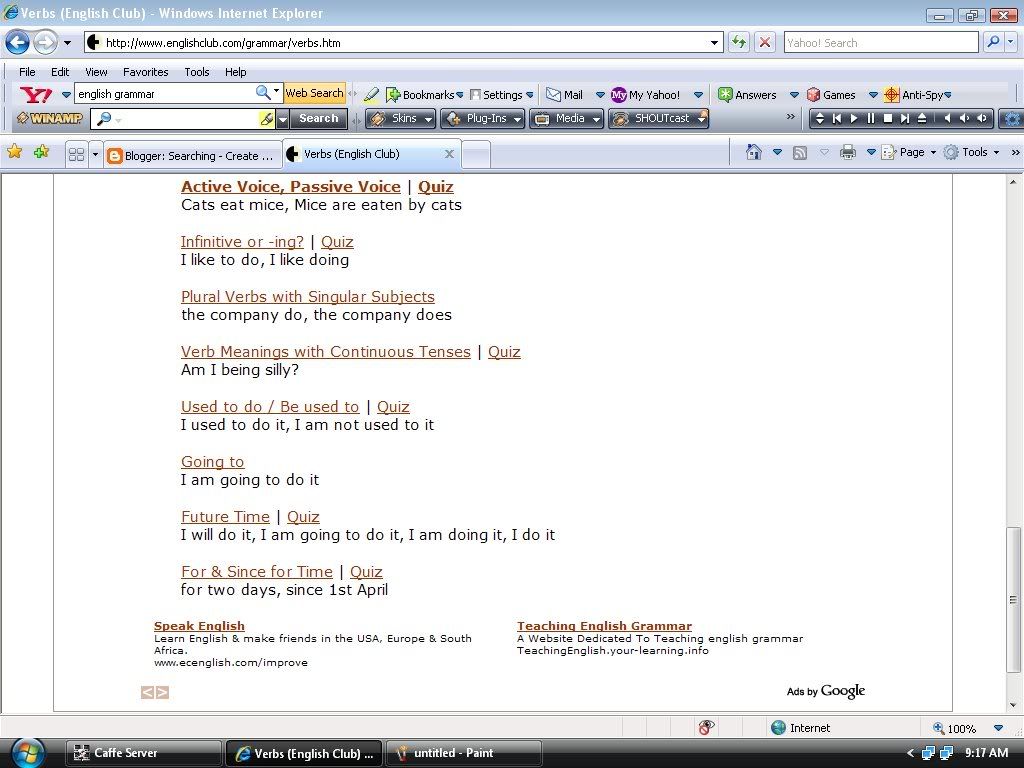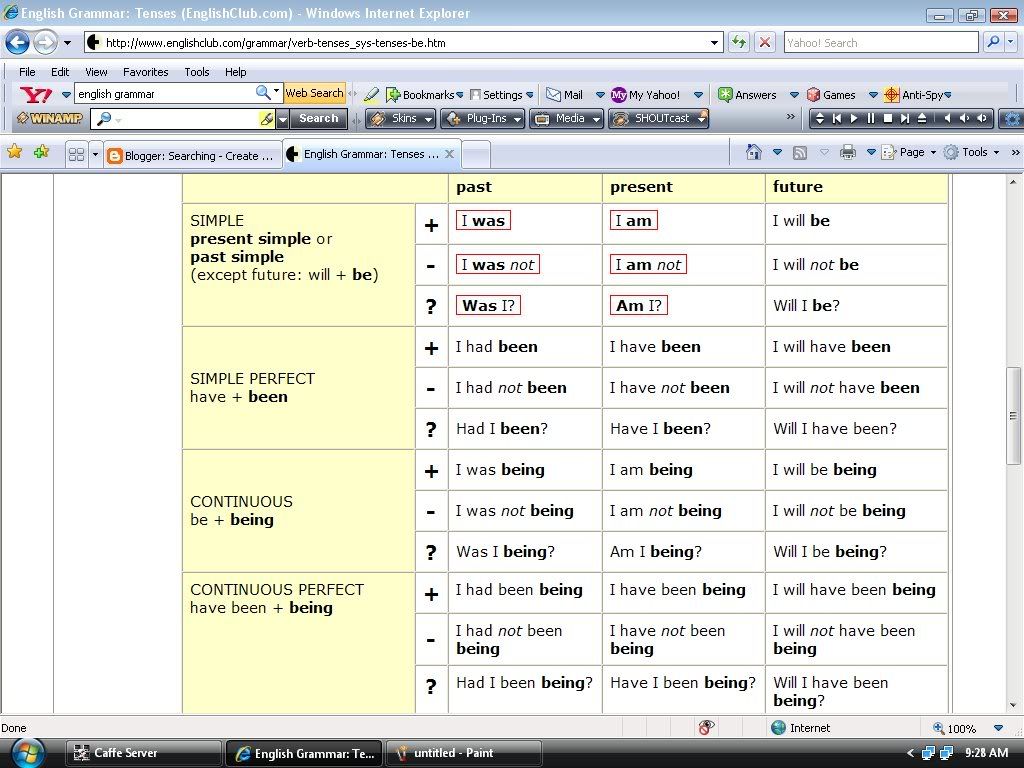What is Grammar?
Grammar is the system of a language. People sometimes describe grammar as the "rules" of a language; but in fact no language has rules*. If we use the word "rules", we suggest that somebody created the rules first and then spoke the language, like a new game. But languages did not start like that. Languages started by people making sounds which evolved into words, phrases and sentences. No commonly-spoken language is fixed. All languages change over time. What we call "grammar" is simply a reflection of a language at a particular time.
Glossary of English Grammar TermsActive Voice-In the active voice, the subject of the verb does the action (eg They killed the President). See also Passive Voice.
Adjective-A word like big, red, easy, French etc. An adjective describes a noun or pronoun.
Adverb-A word like slowly, quietly, well, often etc. An adverb modifies a verb.
Article-The "indefinite" articles are a and an. The "definite article" is the.
Auxiliary Verb-A verb that is used with a main verb. Be, do and have are auxiliary verbs. Can, may, must etc are modal auxiliary verbs.
Clause-A group of words containing a subject and its verb (for example: It was late when he arrived).
Conjunction-A word used to connect words, phrases and clauses (for example: and, but, if).
Infinitive-The basic form of a verb as in to work or work.
Interjection-An exclamation inserted into an utterance without grammatical connection (for example: oh!, ah!, ouch!, well!).
Modal Verb-An auxiliary verb like can, may, must etc that modifies the main verb and expresses possibility, probability etc. It is also called "modal auxiliary verb".
Noun-A word like table, dog, teacher, America etc. A noun is the name of an object, concept, person or place. A "concrete noun" is something you can see or touch like a person or car. An "abstract noun" is something that you cannot see or touch like a decision or happiness. A "countable noun" is something that you can count (for example: bottle, song, dollar). An "uncountable noun" is something that you cannot count (for example: water, music, money).
Object-In the active voice, a noun or its equivalent that receives the action of the verb. In the passive voice, a noun or its equivalent that does the action of the verb.
Participle-The -ing and -ed forms of verbs. The -ing form is called the "present participle". The -ed form is called the "past participle" (for irregular verbs, this is column 3).
Part Of Speech-One of the eight classes of word in English - noun, verb, adjective, adverb, pronoun, preposition, conjunction and interjection.
Passive Voice-In the passive voice, the subject receives the action of the verb (eg The President was killed). See also Active Voice.
Phrase-A group of words not containing a subject and its verb (eg on the table, the girl in a red dress).
Predicate-Each sentence contains (or implies) two parts: a subject and a predicate. The predicate is what is said about the subject.
Preposition-A word like at, to, in, over etc. Prepositions usually come before a noun and give information about things like time, place and direction.
Pronoun-A word like I, me, you, he, him, it etc. A pronoun replaces a noun.
Sentence-A group of words that express a thought. A sentence conveys a statement, question, exclamation or command. A sentence contains or implies a subject and a predicate. In simple terms, a sentence must contain a verb and (usually) a subject. A sentence starts with a capital letter and ends with a full stop (.), question mark (?) or exclamation mark (!).
Subject-Every sentence contains (or implies) two parts: a subject and a predicate. The subject is the main noun (or equivalent) in a sentence about which something is said.
Tense-The form of a verb that shows us when the action or state happens (past, present or future). Note that the name of a tense is not always a guide to when the action happens. The "present continuous tense", for example, can be used to talk about the present or the future.
Verb-A word like (to) work, (to) love, (to) begin. A verb describes an action or state.
The 8 English Parts of SpeechThese are the words that you use to make a sentence. There are only
8 types of word - and the most important is the Verb!
Verbs be, have, do, work
Nouns man, town, music
Adjectives a, the, 69, big
Adverbs loudly, well, often
Pronouns you, ours, some
Prepositions at, in, on, from
Conjunctions and, but, though
Interjections ah, dear, er, umVerbs -are sometimes described as "action words". This is partly true. Many verbs give the idea of action, of "doing" something. For example, words like run, fight, do and work all convey action.
But some verbs do not give the idea of action; they give the idea of existence, of state, of "being". For example, verbs like be, exist, seem and belong all convey state.
A verb always has a subject. (In the sentence "John speaks English", John is the subject and speaks is the verb.) In simple terms, therefore, we can say that verbs are words that tell us what a subject does or is; they describe:
action (Ram plays football.)
state (Anthony seems kind.)
There is something very special about verbs in English. Most other words (adjectives, adverbs, prepositions etc) do not change in form (although nouns can have singular and plural forms). But almost all verbs change in form. For example, the verb to work has five forms:
to work, work, works, worked, working
Of course, this is still very few forms compared to some languages which may have thirty or more forms for a single verb.
Tenses:
The links below are to lessons for each of the 12 basic tenses. In each lesson we look at two aspects of the tense:
Structure: How do we make the tense?
Use: When and why do we use the tense?
Some lessons look at additional aspects, and most of them finish with a quiz to check your understanding.
Present TenseI do do, I do
Present Continuous TenseI am doing, I am doing tomorrow
Present Perfect TenseI have done
Present Perfect Continuous TenseI have been doing
Past TenseI did do, I did
Past Continuous TenseI was doing
Past Perfect TenseI had done
Past Perfect Continuous TenseI had been doing
Future TenseI will do
Future Continuous TenseI will be doing
Future Perfect TenseI will have done
Future Perfect Continuous TenseI will have been doing
Adjectives
An adjective is a word that tells us more about a noun. (By "noun" we include pronouns and noun phrases.)
An adjective "qualifies" or "modifies" a noun (a big dog).
Adjectives can be used before a noun (I like Chinese food) or after certain verbs (It is hard).
We can often use two or more adjectives together (a beautiful young French lady).
Determinersthe, a/an, this, some, any
Adjective Order (with Quiz)beautiful, long, dark brown
Comparative Adjectivesricher, more exciting
Superlative Adjectivesthe richest, the most exciting
Determiners
Determiners are words like the, an, my, some. They are grammatically similar. They all come at the beginning of noun phrases, and usually we cannot use more than one determiner in the same noun phrase.
Articles:
a, an, the
Possessives:
my, your, his, her, our, their
Other determiners:
each, every
either, neither
any, some, no
much, many; more, most
little, less, least
few, fewer, fewest
what, whatever; which, whichever
both, half, all
several
enough
Adjective Order
There are 2 basic positions for adjectives:
before the noun
after certain verbs (be, become, get, seem, look, feel, sound, smell, taste)
adj. noun verb adj.
1 I like big cars.
2 My car is big.
Comparative Adjectives
When we talk about two things, we can "compare" them. We can see if they are the same or different. Perhaps they are the same in some ways and different in other ways. We can use comparative adjectives to describe the differences.
Superlative Adjectives
A superlative adjective expresses the extreme or highest degree of a quality. We use a superlative adjective to describe the extreme quality of one thing in a group of things.
In the example below, "biggest" is the superlative form of the adjective "big":
Adverbs
An adverb is a word that tells us more about a verb. An adverb "qualifies" or "modifies" a verb (The man ranquickly). But adverbs can also modify adjectives (Tara is really beautiful), or even other adverbs (It works very well).
Many different kinds of word are called adverbs. We can usually recognise an adverb by its:
Function (Job)
Form
Position
1. Function
The principal job of an adverb is to modify (give more information about) verbs, adjectives and other adverbs. In the following examples, the adverb is in bold and the word that it modifies is in italics.
Modify a verb:- John speaks loudly. (How does John speak?)- Mary lives locally. (Where does Mary live?)- She never smokes. (When does she smoke?)
Modify an adjective:- He is reallyhandsome.
Modify another adverb:- She drives incrediblyslowly.
But adverbs have other functions, too. They can:
Modify a whole sentence:- Obviously, I can't know everything.
Modify a prepositional phrase:- It's immediatelyinside the door.
2. Form
Many adverbs end in -ly. We form such adverbs by adding -ly to the adjective. Here are some examples:
quickly, softly, strongly, honestly, interestingly
But not all words that end in -ly are adverbs. "Friendly", for example, is an adjective.
Some adverbs have no particular form, for example:
well, fast, very, never, always, often, still
3. Position
Adverbs have three main positions in the sentence:
Front (before the subject):- Now we will study adverbs.
Middle (between the subject and the main verb):- We often study adverbs.
End (after the verb or object):- We study adverbs carefully.
Adverbs of Frequencyalways, sometimes, never...
Adverbs QuizEnglish Pronouns
Pronouns are small words that take the place of a noun. We can use a pronoun instead of a noun. Pronouns are words like: he, you, ours, themselves, some, each... If we didn't have pronouns, we would have to repeat a lot of nouns. We would have to say things like:
Do you like the president? I don't like the president. The president is too pompous.
With pronouns, we can say:
Do you like the president? I don't like him. He is too pompous.
Personal PronounsI, you, he, me, your, his...
Pronoun Casesubjective, objective, possessive
That's Not My Job!This is a story about four people named Everybody, Somebody, Anybody and Nobody.
Personal Pronouns
This summary of personal pronouns includes possessive adjectives for convenience and comparison.
number
person 1st 2nd 3rd
gender* * m=male f=female n=neuter
pronouns = subject4
possessive adjectives =fifth
subject =first
object =second
possessive =third
reflexive =forth
singular m he him his himself his
1st m/f I me mine myself my
2nd m/f you you yours yourself your
3rd f she her hers herself her
n it it its itself its
1st m/f we us ours ourselves our
plural 2nd m/f you you yours yourselves your
3rd m/f/n they them theirs themselves their
Examples:
pronoun subject She likes homework.
object The teacher gave me some homework.
possessive This homework is yours.
reflexive John did the homework himself.
possessive adjective The teacher corrected our homework.
Pronoun Case
Pronouns (and nouns) in English display "case" according to their function in the sentence. Their function can be:
subjective (they act as the subject)
objective (they act as the object)
possessive (they show possession of something else)
The following table shows the different forms for pronouns depending on case.
subjective case objective case possessive case
personal pronouns singular 1st I me my, mine
2nd you you your, yours
3rd he him his
she her her, hers
it it its
plural 1st we us our, ours
2nd you you your, yours
3rd they them their, theirs
relative/interrogative pronouns who whom whose
whoever whomever
which/that/what which/that/what
indefinite pronouns everybody everybody everybody's
A problem of case: Mary and I or Mary and me?
Mary and I are delighted to be here today. (NOT Mary and me)
The letter was addressed to Mary and me. (NOT Mary and I)
In 1, Mary and I are subjects, which is why the pronoun takes the subjective case ("I"). In 2, Mary and I are objects, which is why the pronoun takes the objective case ("me"). An easy way to check the correct case is to try the sentence without Mary. Would you say "I am delighted to be here" or "Me am delighted to be here"? Would you say "The letter was addressed to me" or "The letter was addressed to I"?
English Prepositions
A preposition is a word governing, and usually coming in front of, a noun or pronoun and expressing a relation to another word or element, as in:
She left before breakfast.
What did you come for?(For what did you come?)
List of PrepositionsA Simple Rule for PrepositionsPrepositions of Placeat the bus stop, in the box, on the wall
Prepositions of Timeat Christmas, in May, on Friday
English Prepositions List
There are about 150 prepositions in English. Yet this is a very small number when you think of the thousands of other words (nouns, verbs etc). Prepositions are important words. We use individual prepositions more frequently than other individual words. In fact, the prepositions of, to and in are among the ten most frequent words in English. Here is a short list of 70 of the more common one-word prepositions. Many of these prepositions have more than one meaning. Please refer to a dictionary for precise meaning and usage.
aboard
about
above
across
after
against
along
amid
among
anti
around
as
at
before
behind
below
beneath
beside
besides
between
beyond
but
by
concerning
considering
despite
down
during
except
excepting
excluding
following
for
from
in
inside
into
like
minus
near
of
off
on
onto
opposite
outside
over
past
per
plus
regarding
round
save
since
than
through
to
toward
towards
under
underneath
unlike
until
up
upon
versus
via
with
within
without
English Preposition Rule
There is one very simple rule about prepositions. And, unlike most rules, this rule has no exceptions.
RuleA preposition is followed by a "noun". It is never followed by a verb.
By "noun" we include:
noun (dog, money, love)
proper noun (name) (Bangkok, Mary)
pronoun (you, him, us)
noun group (my first job)
gerund (swimming)
A preposition cannot be followed by a verb. If we want to follow a preposition by a verb, we must use the "-ing" form which is really a gerund or verb in noun form.
Quick Quiz: In the following sentences, why is "to" followed by a verb? That should be impossible, according to the above rule:
I would like to go now.
She used to smoke.
Here are some examples:
Subject + verb
preposition
"noun"
The food is
on
the table.
She lives
in
Japan.
Tara is looking
for
you.
The letter is
under
your blue book.
Pascal is used
to
English people.
She isn't used
to
working.
I ate
before
coming.
Answer to Quick Quiz: In these sentences, "to" is not a preposition. It is part of the infinitive ("to go", "to smoke").
Prepositions of Time: at, in, on
We use:
at for a PRECISE TIME
in for MONTHS, YEARS, CENTURIES and LONG PERIODS
on for DAYS and DATES
at
in
on
PRECISE TIME
MONTHS, YEARS, CENTURIES and LONG PERIODS
DAYS and DATES
at 3 o'clock
in May
on Sunday
at 10.30am
in summer
on Tuesdays
at noon
in the summer
on 6 March
at dinnertime
in 1990
on 25 Dec. 2010
at bedtime
in the 1990s
on Christmas Day
at sunrise
in the next century
on Independence Day
at sunset
in the Ice Age
on my birthday
at the moment
in the past/future
on New Year's Eve
Look at these examples:
I have a meeting at 9am.
The shop closes at midnight.
Jane went home at lunchtime.
In England, it often snows in December.
Do you think we will go to Jupiter in the future?
There should be a lot of progress in the next century.
Do you work on Mondays?
Her birthday is on 20 November.
Where will you be on New Year's Day?
Notice the use of the preposition of time at in the following standard expressions:
Expression
Example
at night
The stars shine at night.
at the weekend
I don't usually work at the weekend.
at Christmas/Easter
I stay with my family at Christmas.
at the same time
We finished the test at the same time.
at present
He's not home at present. Try later.
Notice the use of the prepositions of time in and on in these common expressions:
in
on
in the morning
on Tuesday morning
in the mornings
on Saturday mornings
in the afternoon(s)
on Sunday afternoons
in the evening(s)
on Monday evening
When we say last, next, every, this we do not also use at, in, on.
I went to London last June. (not in last June)
He's coming back next Tuesday. (noton next Tuesday)
I go home every Easter. (not at every Easter)
We'll call you this evening. (not in this evening)
See also Prepositions of Place: at, in, onPrepositions of Place: at, in, on
In general, we use:
at for a POINT
in for an ENCLOSED SPACE
on for a SURFACE
Look at these examples:
Jane is waiting for you at the bus stop.
The shop is at the end of the street.
My plane stopped at Dubai and Hanoi and arrived in Bangkok two hours late.
When will you arrive at the office?
Do you work in an office?
I have a meeting in New York.
Do you live in Japan?
Jupiter is in the Solar System.
The author's name is on the cover of the book.
There are no prices on this menu.
You are standing on my foot.
There was a "no smoking" sign on the wall.
I live on the 7th floor at 21 Oxford Street in London.
Notice the use of the prepositions of place at, in and on in these standard expressions:
at
in
on
at home
in a car
on a bus
at work
in a taxi
on a train
at school
in a helicopter
on a plane
at university
in a boat
on a ship
at college
in a lift (elevator)
on a bicycle, on a motorbike
Conjunctions
A conjunction is a word that "joins". A conjunction joins two parts of a sentence.
Here are some example conjunctions:
Coordinating Conjunctions
Subordinating Conjunctions
and, but, or, nor, for, yet, so
although, because, since, unless
We can consider conjunctions from three aspects.
Form
Conjunctions have three basic forms:
Single Wordfor example: and, but, because, although
Compound (often ending with as or that)for example: provided that, as long as, in order that
Correlative (surrounding an adverb or adjective)for example: so...that
Function
Conjunctions have two basic functions or "jobs":
Coordinating conjunctions are used to join two parts of a sentence that are grammatically equal. The two parts may be single words or clauses, for example:- Jack and Jill went up the hill.- The water was warm, but I didn't go swimming.
Subordinating conjunctions are used to join a subordinate dependent clause to a main clause, for example:- I went swimming although it was cold.
Position
Coordinating conjunctions always come between the words or clauses that they join.
Subordinating conjunctions usually come at the beginning of the subordinate clause.
In this lesson we will look in more detail at:
Coordinating ConjunctionsSubordinating ConjunctionsCoordinating Conjunctions
The short, simple conjunctions are called "coordinating conjunctions":
and, but, or, nor, for, yet, so
A coordinating conjunction joins parts of a sentence (for example words or independent clauses) that are grammatically equal or similar. A coordinating conjunction shows that the elements it joins are similar in importance and structure:
+
Look at these examples - the two elements that the coordinating conjunction joins are shown in square brackets [ ]:
I like [tea] and [coffee].
[Ram likes tea], but [Anthony likes coffee].
Coordinating conjunctions always come between the words or clauses that they join.
When a coordinating conjunction joins independent clauses, it is always correct to place a comma before the conjunction:
I want to work as an interpreter in the future, so I am studying Russian at university.
However, if the independent clauses are short and well-balanced, a comma is not really essential:
She is kind so she helps people.
When "and" is used with the last word of a list, a comma is optional:
He drinks beer, whisky, wine, and rum.
He drinks beer, whisky, wine and rum.
The 7 coordinating conjunctions are short, simple words. They have only two or three letters. There's an easy way to remember them - their initials
Subordinating Conjunctions
The majority of conjunctions are "subordinating conjunctions". Common subordinating conjunctions are:
after, although, as, because, before, how, if, once, since, than, that, though, till, until, when, where, whether, while
A subordinating conjunction joins a subordinate (dependent) clause to a main (independent) clause:
+
Look at this example:
main orindependent clause
subordinate ordependent clause
Ram went swimming
although
it was raining.
subordinatingconjunction
A subordinate or dependent clause "depends" on a main or independent clause. It cannot exist alone. Imagine that somebody says to you: "Hello! Although it was raining." What do you understand? Nothing! But a main or independent clause can exist alone. You will understand very well if somebody says to you: "Hello! Ram went swimming."
A subordinating conjunction always comes at the beginning of a subordinate clause. It "introduces" a subordinate clause. However, a subordinate clause can sometimes come after and sometimes before a main clause. Thus, two structures are possible:
+
Ram went swimming although it was raining.
+
Although it was raining, Ram went swimming.
Interjections
Hi! That's an interjection. :-)
Interjection is a big name for a little word. Interjections are short exclamations like Oh!, Um or Ah! They have no real grammatical value but we use them quite often, usually more in speaking than in writing. When interjections are inserted into a sentence, they have no grammatical connection to the sentence. An interjection is sometimes followed by an exclamation mark (!) when written.
The table below shows some interjections with examples.
interjection meaning exampleah
ah expressing pleasure "Ah, that feels good."
expressing realization "Ah, now I understand."
expressing resignation "Ah well, it can't be heped."
expressing surprise "Ah! I've won!"
alas, dear, eher,
hello, hullohey,
hi, hmmoh, o,
ouchuh, uh,
huh,um, umm,
well
alas
expressing grief or pity
"Alas, she's dead now."
dear
expressing pity
"Oh dear! Does it hurt?"
expressing surprise
"Dear me! That's a surprise!"
eh
asking for repetition
"It's hot today." "Eh?" "I said it's hot today."
expressing enquiry
"What do you think of that, eh?"
expressing surprise
"Eh! Really?"
inviting agreement
"Let's go, eh?"
er
expressing hesitation
"Lima is the capital of...er...Peru."
hello, hullo
expressing greeting
"Hello John. How are you today?"
expressing surprise
"Hello! My car's gone!"
hey
calling attention
"Hey! look at that!"
expressing surprise, joy etc
"Hey! What a good idea!"
hi
expressing greeting
"Hi! What's new?"
hmm
expressing hesitation, doubt or disagreement
"Hmm. I'm not so sure."
oh, o
expressing surprise
"Oh! You're here!"
expressing pain
"Oh! I've got a toothache."
expressing pleading
"Oh, please say 'yes'!"
ouch
expressing pain
"Ouch! That hurts!"
uh
expressing hesitation
"Uh...I don't know the answer to that."
uh-huh
expressing agreement
"Shall we go?" "Uh-huh."
um, umm
expressing hesitation
"85 divided by 5 is...um...17."
well
expressing surprise
"Well I never!"
introducing a remark
"Well, what did he say?"
Gerunds (-ing)
Gerunds are sometimes called "verbal nouns".
When a verb ends in -ing, it may be a gerund or a present participle. It is important to understand that they are not the same.
When we use a verb in -ing form more like a noun, it is usually a gerund:
Fishing is fun.
When we use a verb in -ing form more like a verb or an adjective, it is usually a present participle:
Anthony is fishing.
I have a boring teacher.
In this lesson, we look at the different ways in which we use gerunds, followed by a quiz to check your understanding:
Many grammarians do not like to use the expression "gerund". That is because there is sometimes no clear difference between a gerund and a present participle.
Gerunds as Subject, Object or ComplementGerunds after PrepositionsGerunds after Certain VerbsGerunds in Passive SenseGerunds QuizQuestions
What is a question?
A statement is a sentence that gives information. A question is a sentence that asks for information.
Statement:
I like EnglishClub.com.
Question:
Do you like EnglishClub.com?
A written question in English always ends with a question mark: ?
In this lesson we look at basic questions in English, followed by a quiz to check your understanding:
Basic Question StructureBasic Question TypesQuestions QuizHot Links
VerbsPassive voiceModal verbsConditionalsQuestionsIrregular verbsGoing toGerundsPhrasal VerbsTensesNouns(Un)Countable nounsAdjectivesArticlesPreposition List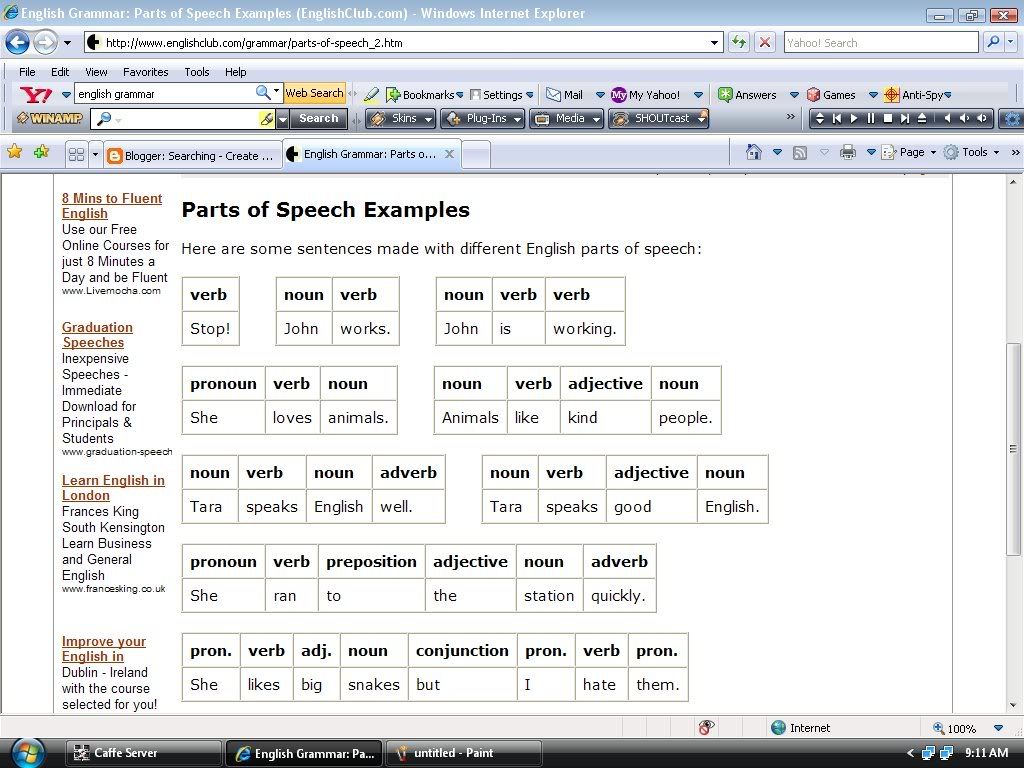
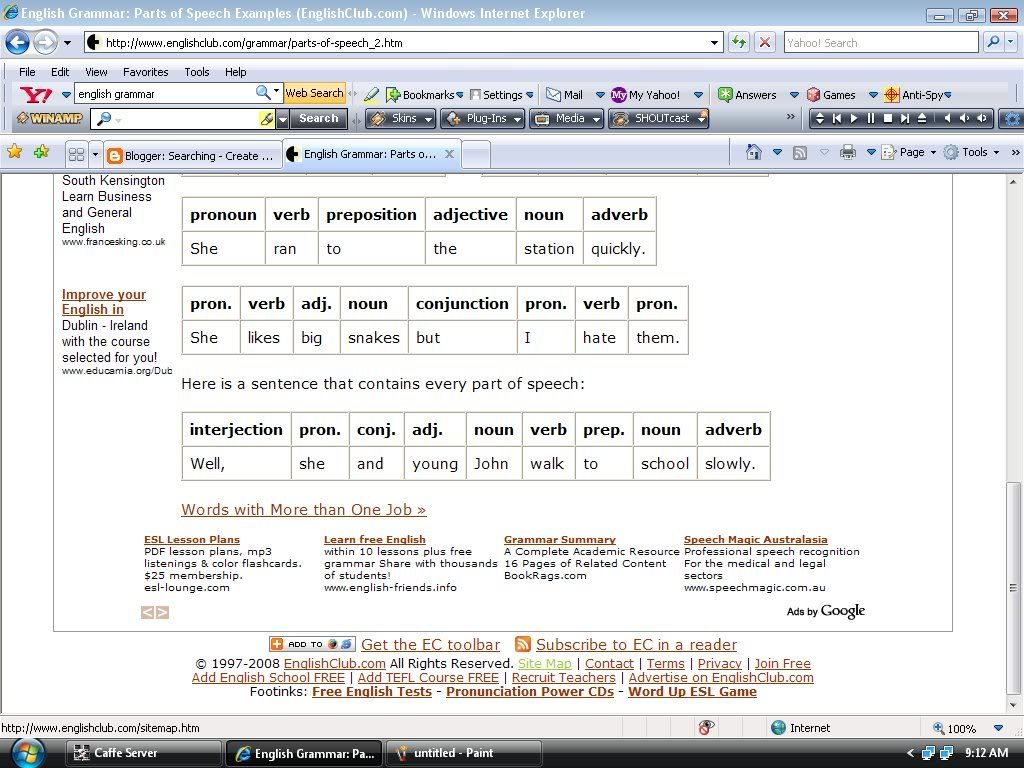
 English grammar
English grammar is a body of rules (grammar) specifying how phrases and sentences are constructed in the English language. Accounts of English grammar tend to fall into two groups: the descriptivist, which describes the grammatical system of English; and the prescriptivist, which does not describe English grammar but rather sets out a small list of social regulations that attempt to govern the linguistic behaviour of native speakers (see
Linguistic prescription and
Descriptive linguistics). Prescriptive grammar concerns itself with several open
disputes in English grammar, often representing changes in usage over time.
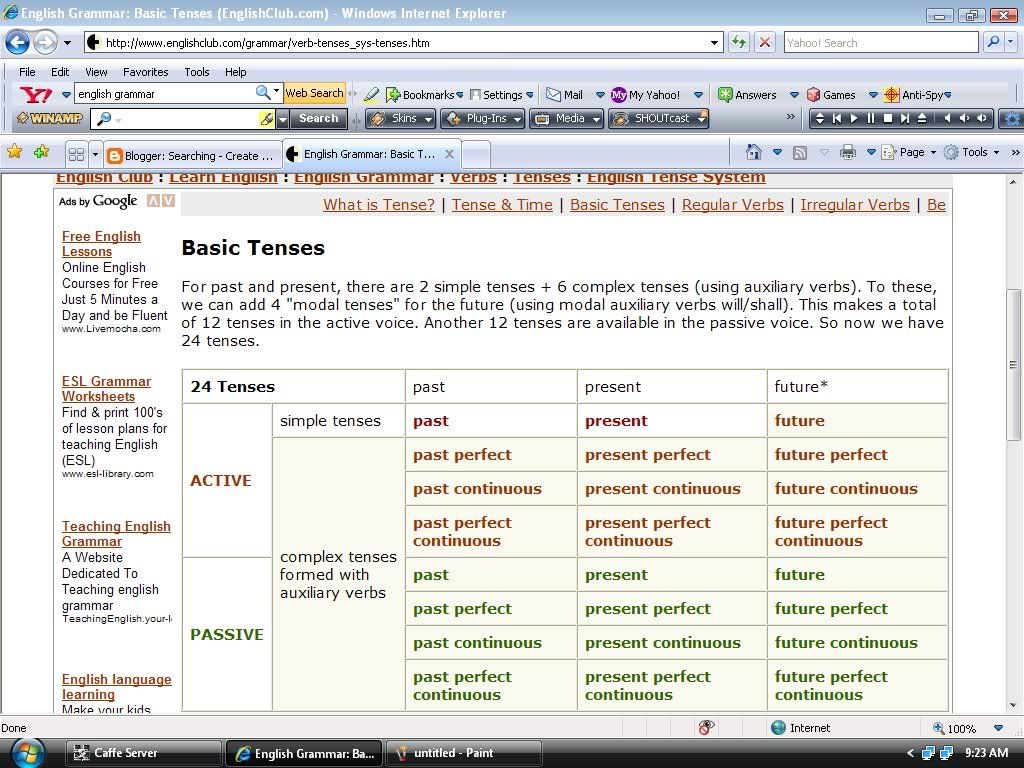
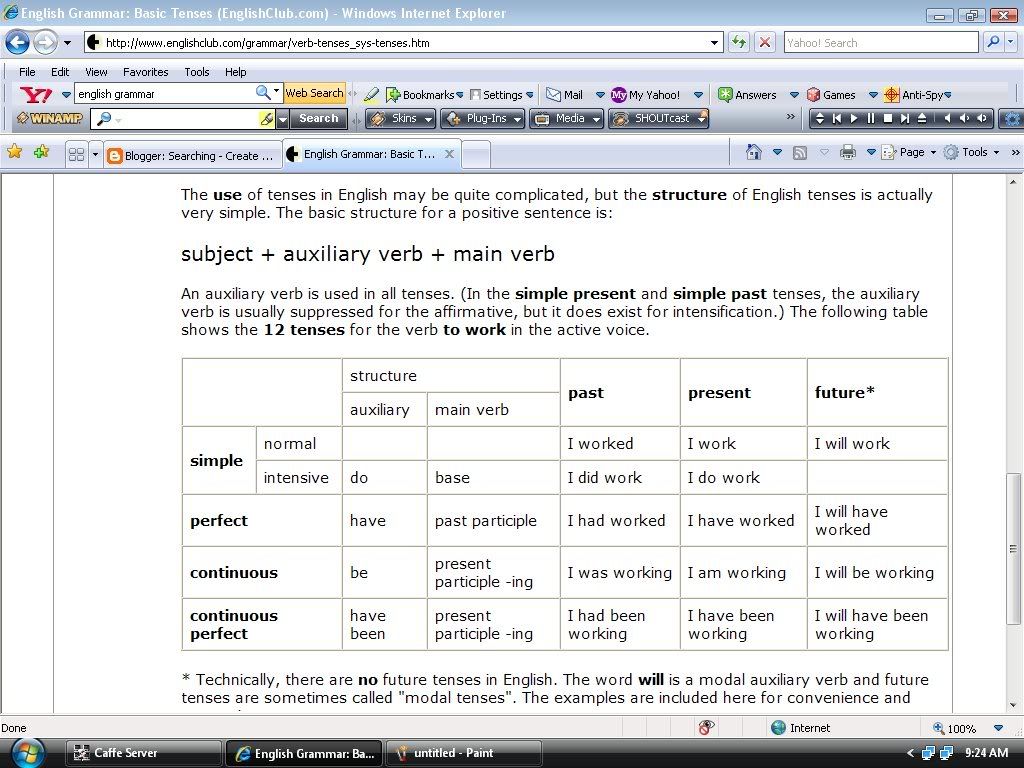
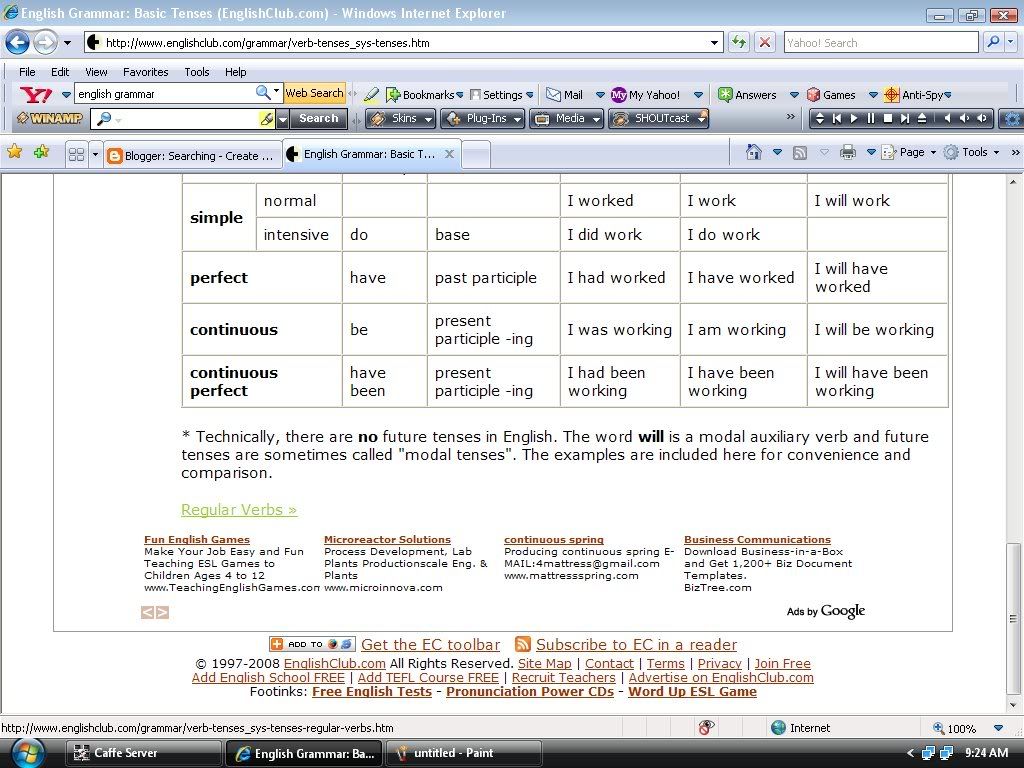 Grammar
Grammar is the field of linguistics that covers the rules governing the use of any given
natural language. It includes
morphology and
syntax, often complemented by
phonetics,
phonology,
semantics, and
pragmatics.
Each language has its own distinct grammar. "English grammar" is the rules of the English language itself. "An English grammar" is a specific study or analysis of these rules. A
reference book describing the grammar of a language is called a "reference grammar" or simply "a grammar". A fully explicit grammar exhaustively describing the
grammatical constructions of a language is called a descriptive grammar, as opposed to
linguistic prescription which tries to enforce the governing rules how a language is to be used.
Nouns are defined notionally (i.e.
semantically) as generally describing persons, places, things, or ideas. This notional definition does account for what are the central members of the noun lexical category. However, the notional definition fails to account for several nouns, such as
deverbal nouns like jump or destruction (which are notionally more like actions). For this reason, many grammatical descriptions of English define nouns in terms of grammar (i.e. according to their
morphological and
syntactic behavior). Nonetheless, traditional English grammars and some pedagogical grammars define nouns with a notional definition.
Non-proper nouns, in general, are not marked for
case or gender, but are marked for number and
definiteness (when referential).
Words that belong to the noun
lexical category (or part of speech) can be simple words that belong primarily to the noun category. These include words like man, dog, rice, etc.
Other nouns can be derived from words belonging to other lexical categories with the addition of class-changing derivational suffixes. For example, the suffixes -ation, -ee, -ure, -al, -er, -ment are attached to verb bases to create
deverbal nouns.
vex (verb)>vexation (noun)
appoint (verb)>appointee (noun)
fail (verb)>failure (noun)
acquit (verb)>acquittal (noun)
run (verb)>runner (noun)
adjust (verb)>adjustment (noun)
Still other suffixes (-dom, -hood, -ist, -th, -ness) form derived deadjectival nouns from
adjectives:
free (adjective)>freedom (noun)
lively (adjective)>livelihood (noun)
moral (adjective)>moralist (noun)
warm (adjective)>warmth (noun)
happy (adjective)>happiness (noun)
These derivational suffixes can also be added to (compound)
phrasal bases like in the noun stick-it-to-itiveness, which is derived from the phrase [ stick it to it ] + -ive + -ness.
Besides derivational suffixation, words from other lexical categories can be converted straight to nouns (without any overt morphological indication) by a
conversion process (also known as zero derivation). For example, the word run is a verb but it can be converted to a noun run "point scored in a baseball game (by running around the bases)" as in the sentence:
The team won with five runs in the ninth.
Here it is evident that run is a noun because it is pluralized with the inflectional plural suffix -s, it is modified by the preceding
quantifier five, and it occurs as the
head of the noun phrase five runs which acts as the
complement of the
preposition with in the
prepositional phrase with five runs. Other lexical categories can also be converted:
if (subordinator) > if (noun) as in no ifs, ands, or buts about it [idiomatic]
daily (adjective) > daily (noun) [= "newspaper"] as in did you buy a daily for me?
down (preposition) > down (noun) [in American football] as in they made a new first down



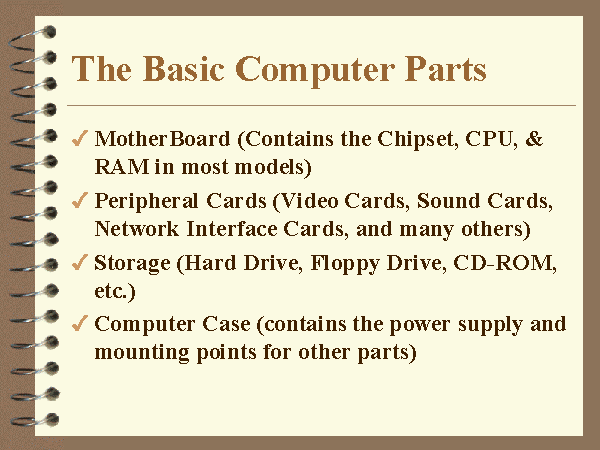

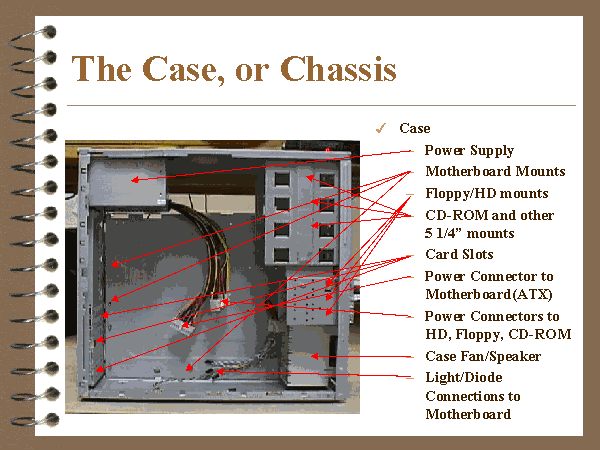
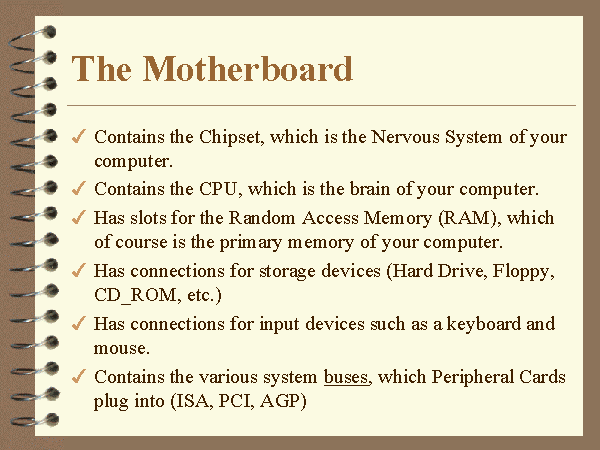
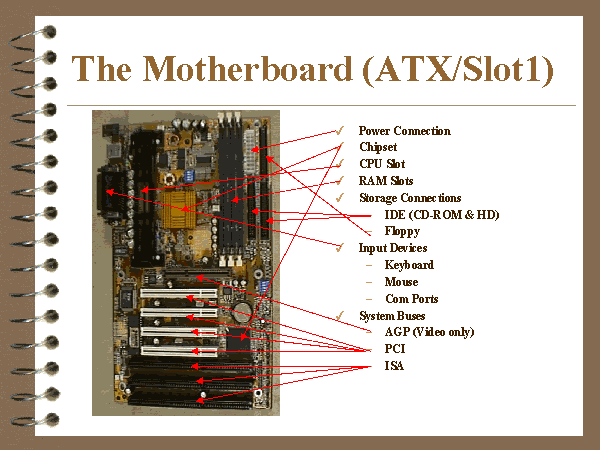

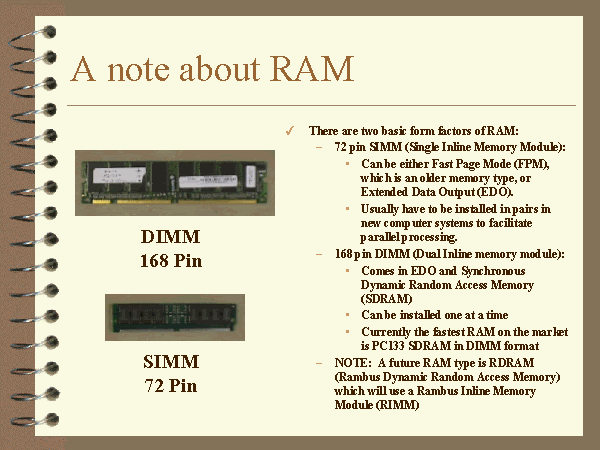
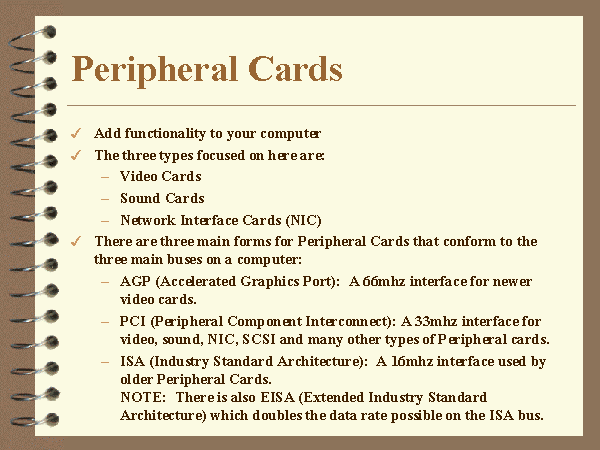

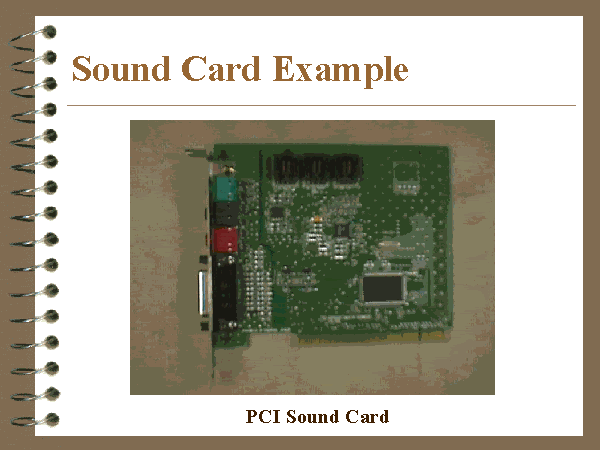
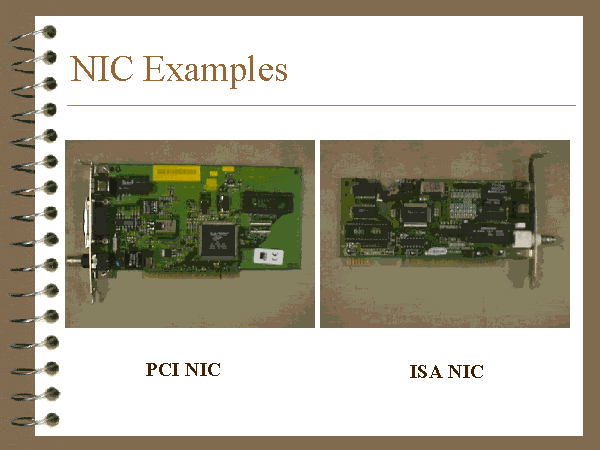
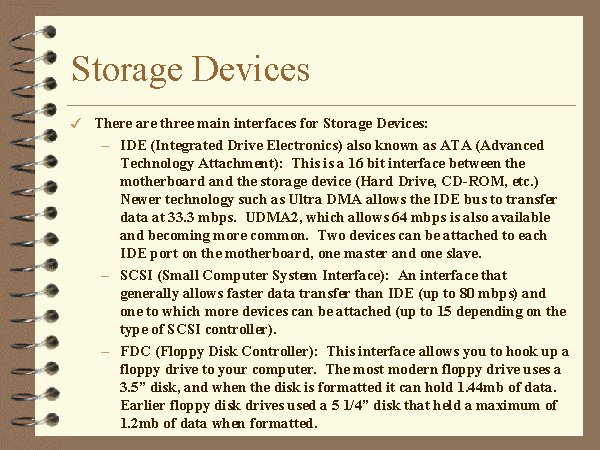
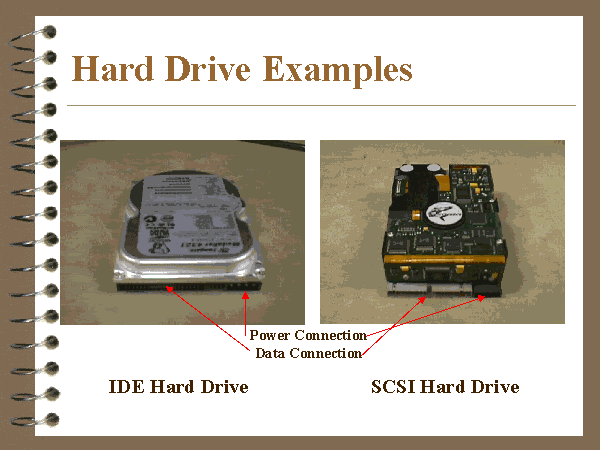
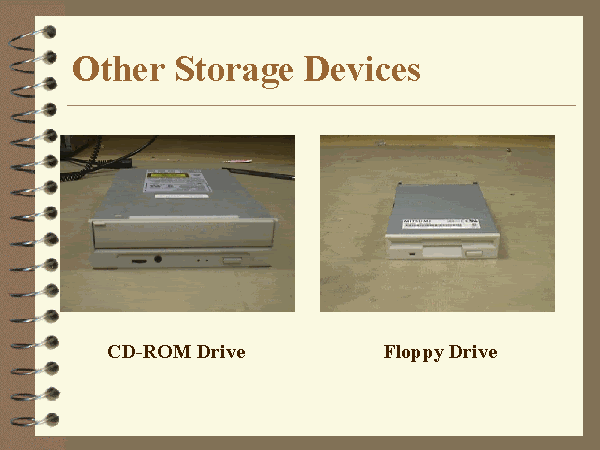
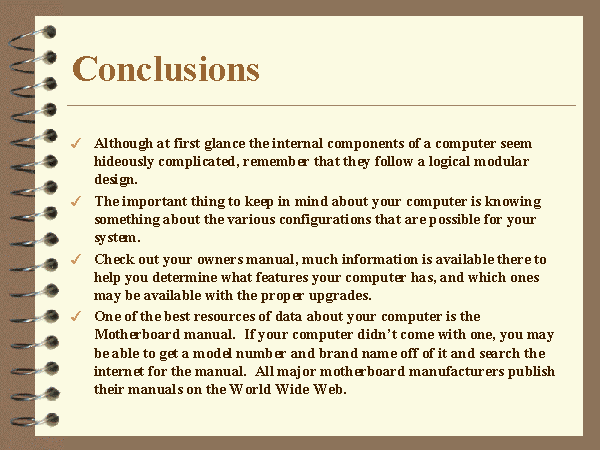
 THE BASIC PARTS OF COMPUTER
THE BASIC PARTS OF COMPUTER











